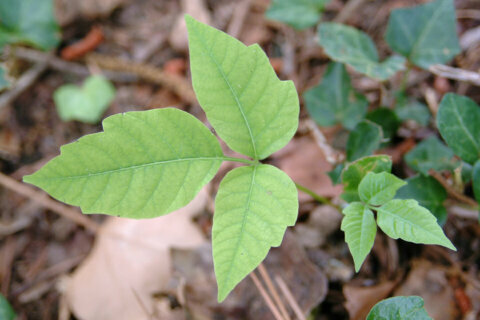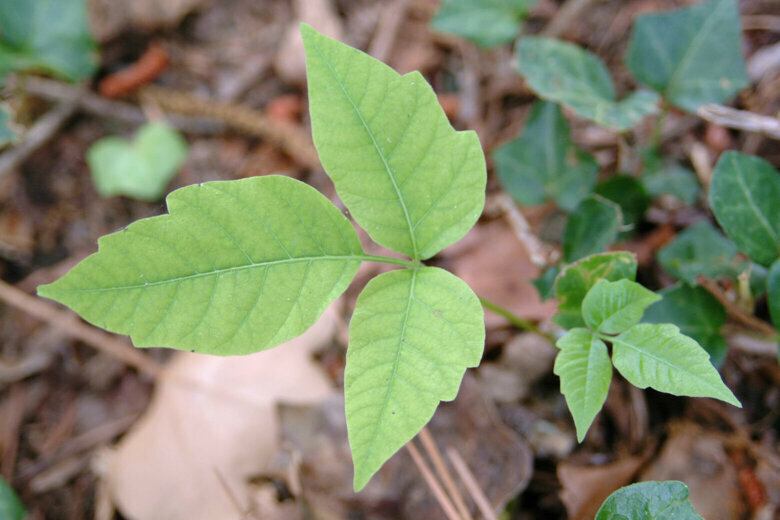
Have you ever heard the time-tested “leaves of three, let it be” warning to avoid itchy and swollen poison ivy rashes?
Research from Virginia Tech University found that it may not be the best line of defense.
“We’ve been saying that because people really don’t want to come into contact with the plant,” said John Jelesko, an associate professor in the School of Plant and Environmental Sciences. “But it’s been known that poison ivy is a shape-shifter. It has a way of taking on a lot of different forms.”
Jelesko’s students decided to identify the poisonous plant’s different variations.
They pored over publicly available data from more than 2,000 photos captured by nature lovers and photographers across the United States.
Researchers found that poison ivy can take many different forms, including displaying five leaflets. And it can also mimic other harmless, three-leaf native vines like the American Hog Peanut plant, Jelesko told WTOP.
“It’s really tricky. This likely accounts for a lot of accidental run-ins with the plant,” he said. “We got really solid measurements on this. The different shapes poison ivy can take on has enormous range.”
Jelesko said it may be time to throw out the adage.
“Our data shows that advice is only going to go so far,” he told WTOP. “And probably not far enough to prevent getting a rash. Doctors are going to have come up with something a little bit better than ‘leaves of three, let it be.’”
Jelesko said what hikers and nature lovers need on their outings is an expert.
“Most people are not going to become an expert,” he said. “But it turns out most of us carry around these little objects that are kind of experts, they’re smartphones.”
Nature websites, like iNaturalist, use artificial intelligence to immediately spot the differences between poison ivy and other innocuous plants.
“Just take a picture of something and they use really sophisticated AI, that does a pretty good job of identifying plants,” said Jelesko.
Another option is to wear protective clothing like pants and long-sleeve shirts on hikes to avoid the red, itchy blisters that come with poison ivy rashes.
“If there’s some place where you know there’s a lot of poison ivy, you’ll really just want to cover up your skin,” Jelesko said.
Get breaking news and daily headlines delivered to your email inbox by signing up here.
© 2024 WTOP. All Rights Reserved. This website is not intended for users located within the European Economic Area.









